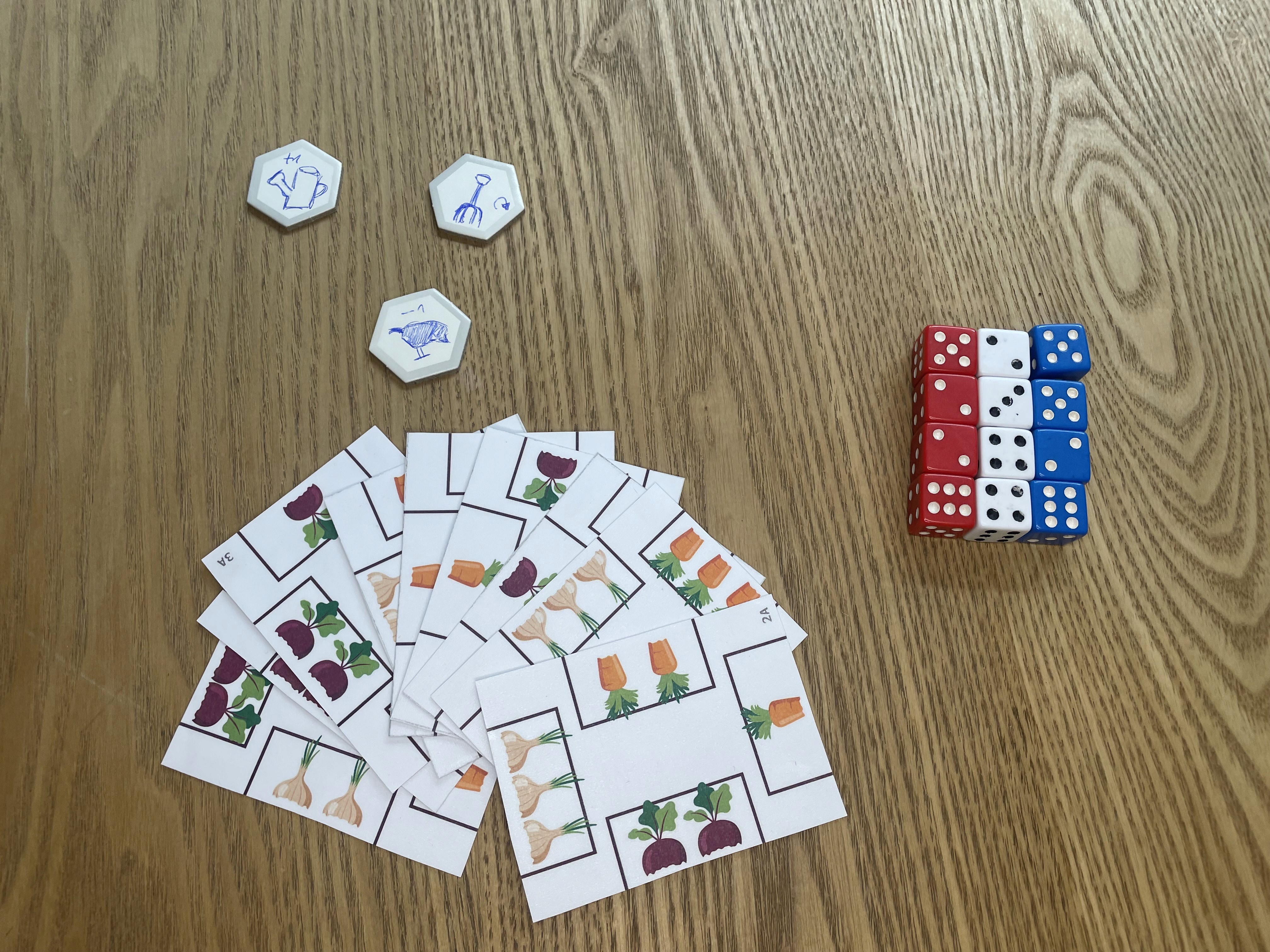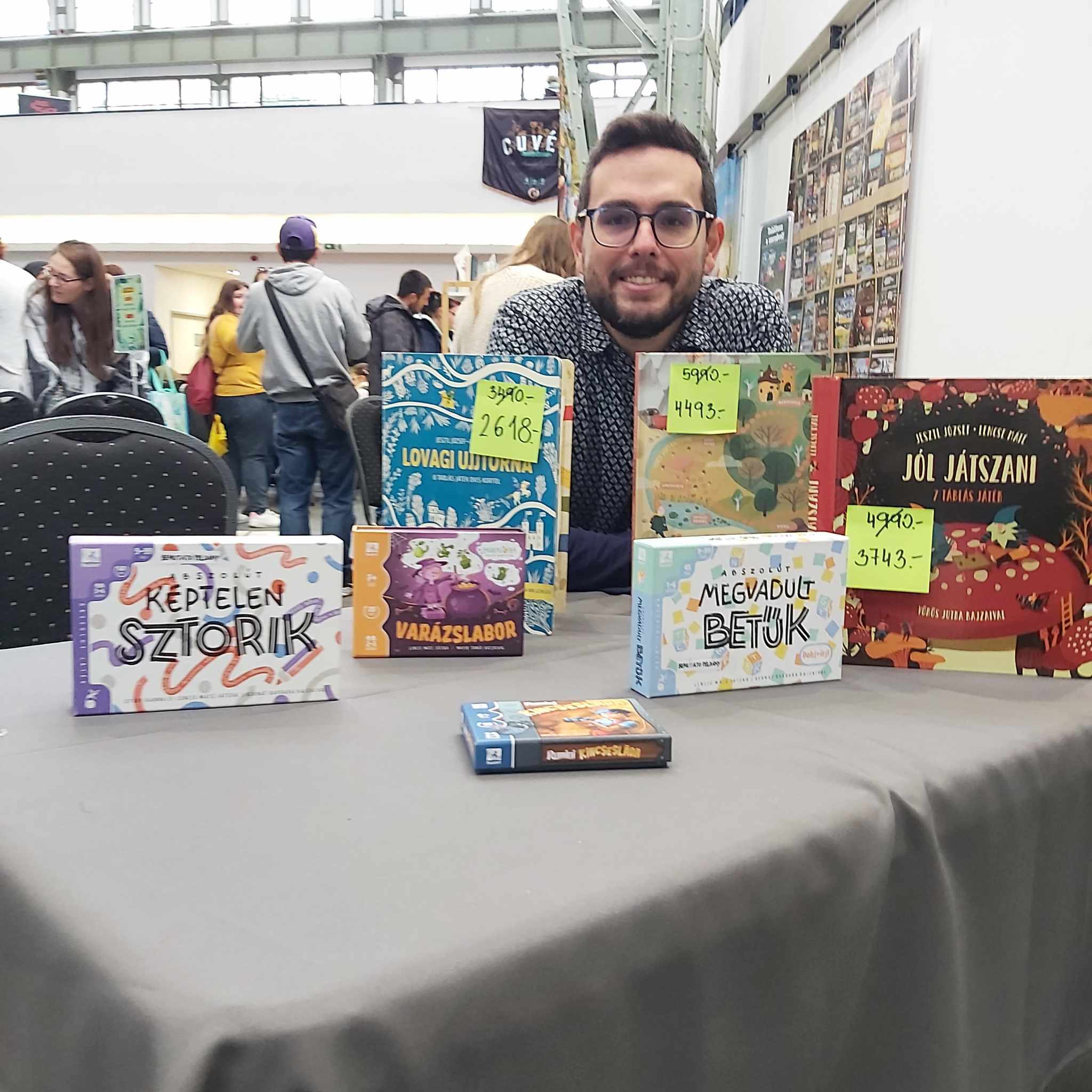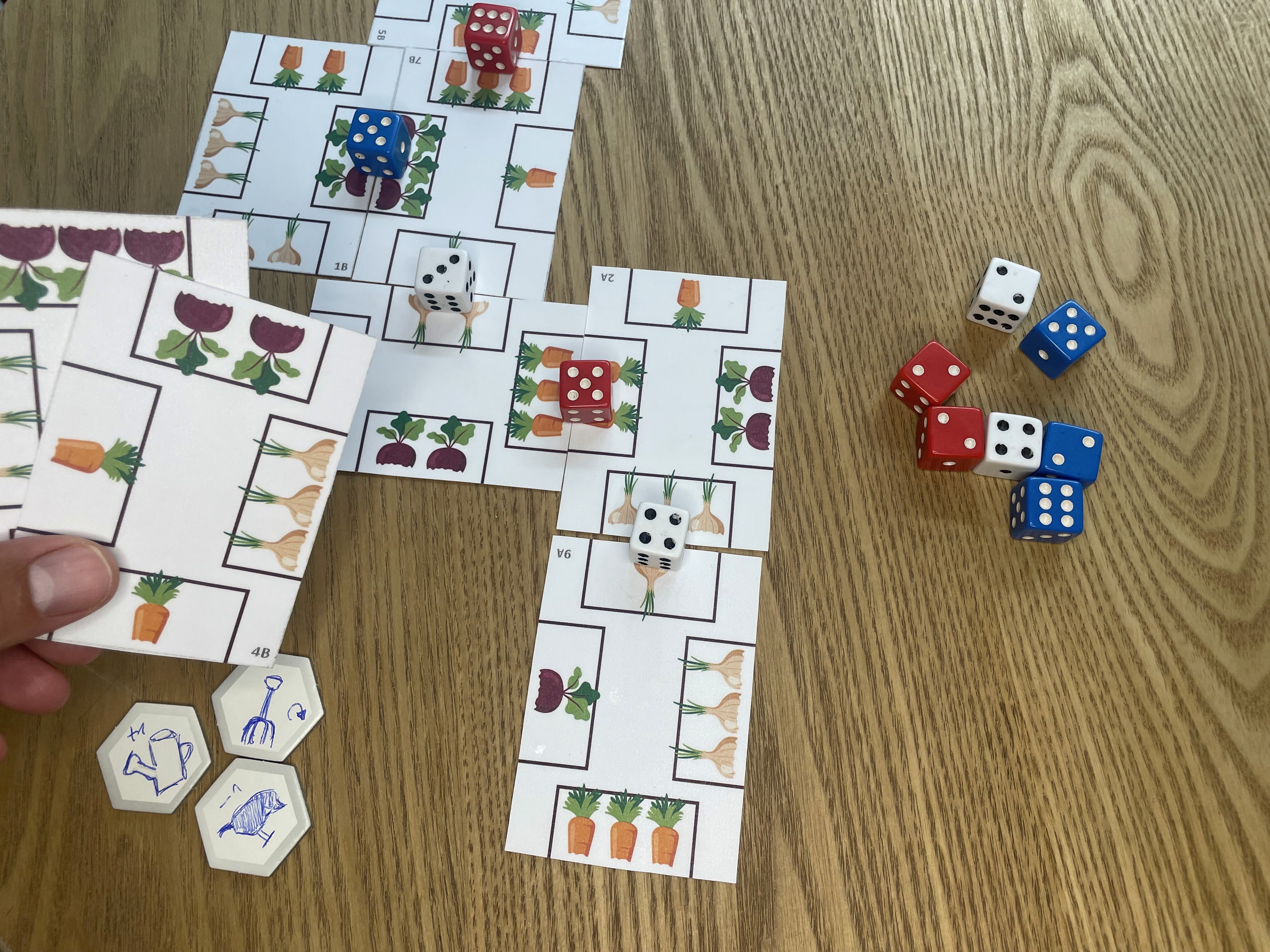Overview
Designer Mark Tuck sums up his game on BGG like this:
"Veggie Patch is a quick solitaire, dice-rolling, tile-laying, dice-placement game."
I always mention—half as a curiosity—that Hungarians look at me oddly whenever I bring up solitaire board games. In Hungarian we call them "social" games, not board games, so the idea of playing alone feels like a contradiction in terms. Meanwhile the market keeps expanding: fully solo titles are thriving, and designers and publishers are eager to add a solo mode to almost everything. That's just how life is now.
Of Mark Tuck's solitaire designs, I've logged dozens of plays of his 2021 title Grove, and even then I was already toying with print-and-play possibilities. So I was delighted to see the line continue—this time squarely in that category. A further fun fact: Veggie Patch was created for the 2025 9-Card Nanogame Print and Play Design Contest. Nanogame and print-and-play? For me that's the best possible combo!
Game Information
- Designer: Mark Tuck
- Year: 2025
- Players: 1 (Solo only)
- Type: Nanogame, Print & Play
- Theme: Vegetable gardening
- Age: 8+ (6-7 for curious kids)
Key Features
- • Single double-sided sheet to print
- • Minimal components needed
- • Quick setup and play
- • Mathematical learning opportunities
- • Portable and pocket-friendly
- • Contest-winning design


Review
Print and play
You only need to print a single double-sided sheet. Then comes about a minute and a half of cutting—I also glued and laminated it, but that's not necessary. As a game designer, I have tons of stuff, so I made tokens, though I couldn't find the perfect dice, but as the rules say: it doesn't matter. It's really important to me that the print and play aspect is fulfilled; I don't like too many components in these kinds of games, so I see this as an ideal solution—everything was ready quickly, the rules aren't too complex either, so I could really start playing soon after printing. And even though the rules aren't complicated, finding a good solution is often quite tricky, so I quickly ran through 6–7 games.
Solitaire
This game can be played solo. It's quick, dynamic, and thought-provoking. If you enjoy puzzles, if you like finding the best possible solution and don't mind fiddling around and experimenting to get there, I can highly recommend games like this. What I find especially exciting is that a clever game like this involves both dice and cards, so luck plays a big role—essentially, you're solving the challenge that life throws at you, with the hand you're dealt. And that absolutely has its charm.
The game is recommended from age 8, but I'd confidently give it to curious 6- or 7-year-olds as well. Parents and educators know their kids best—this is something they can be trusted to decide.
Mechanism
I love the relationship modern board games have with dice. At first, the rolling and modifying of the dice at the start of the game felt like a bit of a hassle, but I got used to it in no time. I really like how this familiar component is present in the game—we even roll it—but it's used in a fundamentally atypical way.
Tile placement brings me a sense of calm, and I love how a little world slowly takes shape—in this case, a vegetable garden. Of course, while you're peacefully placing tiles, your mind is constantly turning, figuring out how to make the most of each situation. And it's this duality that really creates the flow of the game.

Illustrations
I think the production quality is perfectly fine. I even like the table presence, even though my dice don't perfectly match in color, and my printer couldn't quite handle the fuller design. (Bonus points to the designer for thinking of this—there's also a printer-friendly version of the cards available for download.) Everything is clear and easy to read, and honestly, I don't expect more than that from the illustrations of a game like this.
Overall Impression
This game delivers exactly what it promises. You can slip it in your pocket, it's perfect for relaxing at the beach, but also great to pull out anytime you're waiting somewhere alone. It's so much better than staring at your phone.
And of course, the teacher in me comes out too. This game would've fit perfectly in my "how to enjoy math during summer break" recommendation—too bad I've already finished that one.
My daughter is 8 years old, going into third grade, and she needs to do the math for this game within the appropriate number range. And what's lovely is that it's all done in a gentle, subtle way. The math is very much present, but never pushy.
Games like this are a great way to show how even simple structures can do wonders for developing mathematical motivation. It's such a joy when she figures out on her own why she has to subtract the number of seeds at the beginning, and how that relates to her mistakes. When she discovers the breakdowns of 4-5-6, starts halving and rounding effortlessly, all while having fun solving a puzzle—these are the moments that bring her closer to seeing that math is beautiful, you just need to look at it the right way.
And for that, the world of board games is excellent—and so is Veggie Patch.
Reviews
Quality gaming sessions are also accessible with print and play games.
I'll check out the other reviews.